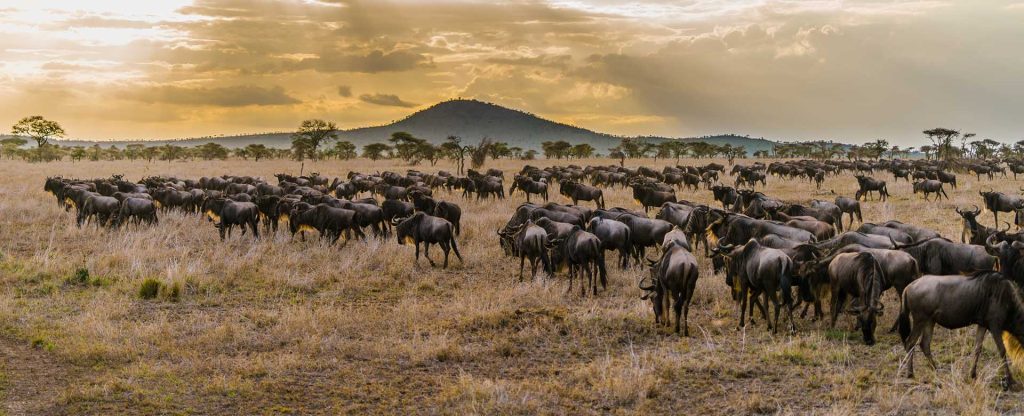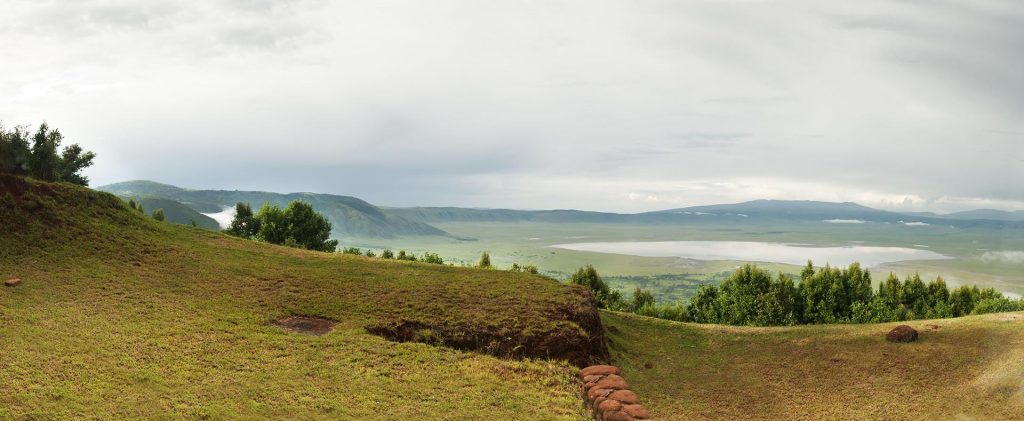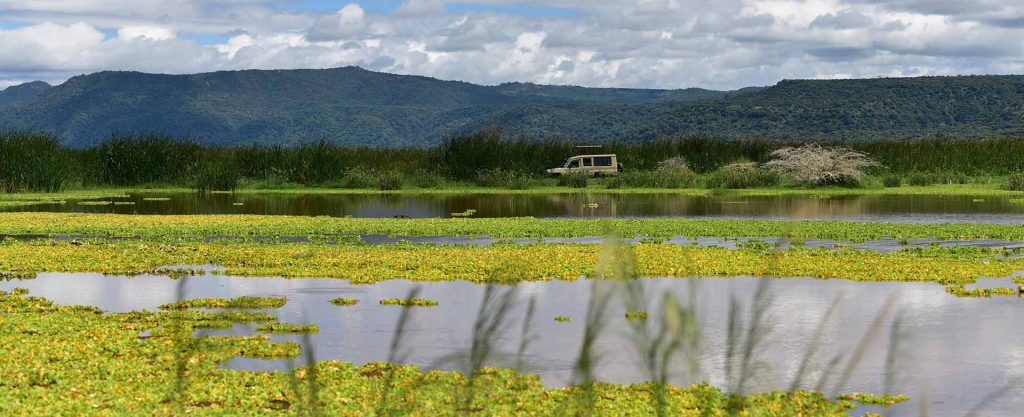Tanzania Top Destinations
Arusha National Park
Arusha serves as the main entry point to the majority of safari destinations in Tanzania. Situated around 30 miles away from Kilimanjaro International Airport, the town is nestled at an elevation of approximately 4100 feet above sea level. Known for its fertile land, Arusha boasts a thriving agricultural sector, producing crops such as coffee, wheat, sisal, and maize. In close proximity to the town lies the remarkable Arusha National Park, which Sir Julian Huxley aptly described as a “gem amongst parks.”
This park encompasses three breathtaking features: the Momela Lakes, Meru Crater, and the Ngurdoto Crater. On clear days, visitors are treated to awe-inspiring views of both Mount Kilimanjaro and Mount Meru from virtually any part of the park. The park’s landscape and wildlife vary according to the diverse topography, ranging from lush forests to expansive swamps. Renowned for its rich avian diversity, the park is home to 400 species of birds, including both migratory and resident species, as well as the striking black and white colobus monkey. Other frequently spotted animals include baboons, elephants, giraffes, buffalos, hippos, leopards, hyenas, and a wide array of antelope species. Due to its close proximity to Arusha, the park is an ideal destination for a day trip.
By road:
Arusha National Park is conveniently located just a short 45-minute drive from the town of Arusha. Interestingly, some of the town’s accommodations are situated along the route leading to the National Park. Given that Arusha serves as the primary starting point for safaris in northern Tanzania, incorporating a visit to this charming park is effortlessly achievable.By Air:
There are multiple options available for reaching Arusha. The most convenient method is to book a direct flight to Kilimanjaro International Airport (KIA), which is approximately 46km/29mi away from Arusha. Another option is to fly to Julius Nyerere International Airport (DAR), located near Dar es Salaam, and then take a connecting domestic flight to either Arusha Airport (ARK) or Kilimanjaro International Airport (KIA). An alternative, although not as obvious, is to fly to Jomo Kenyatta International Airport (NBO), situated just outside Nairobi in Kenya, and then take a shuttle bus to Arusha. In most cases, your tour operator will arrange for your pick-up from the airports in the Arusha area and handle your transportation needs. Depending on your arrival and departure times, you may have the opportunity to include a half-day visit at the beginning or end of your safari in northern Tanzania. If time permits, you can even plan for a full day excursion.Arusha National Park boasts stunning landscapes and a wide array of animal, bird, and plant species. This remarkable park is characterized by its cascading waterfalls, picturesque lakes, towering cliffs, and deep gorges, as well as its marshes and watering holes, creating an ideal haven for both wildlife and flora. Visitors can immerse themselves in the best of Africa’s natural beauty, accompanied by knowledgeable guides who will lead them on exhilarating walking safaris, serene canoe trips on the lakes, or thrilling game drives.
Within Arusha, you will encounter various groups of forest elephants, numerous buffalo herds, graceful water and bushbucks, as well as duikers and dik diks. Among the park’s predator residents are spotted hyenas, leopards, and civets. One of the main highlights is the abundant primate population, particularly the black and white Colobus monkeys and the radiant Sykes monkeys, which are often spotted during game drives or walks in the park.
While lions are absent from this park, leopards do inhabit the area, although they are not frequently sighted. These elusive felines prefer to hunt under the cover of darkness. Arusha National Park offers a more tranquil setting, providing a peaceful environment for visitors, albeit with less emphasis on the exhilaration of observing large game.
Arusha National Park experiences a pleasant and mild climate. The Dry season spans from June to September, while there are two Wet seasons: the ‘long rains’ occurring from March to May, and the ‘short rains’ taking place from October to November. During the rainy season, there are usually afternoon thundershowers, but it is uncommon for it to rain throughout the entire day. Arusha NP encompasses Mount Meru and the surrounding area, which receives slightly more rainfall and clouds.
The average temperatures throughout the year remain consistent. Nights and early mornings tend to be cool to cold, while the daytime temperatures rarely get hot. It is advisable to pack warm clothing for the evenings and for game drives in the early morning.






